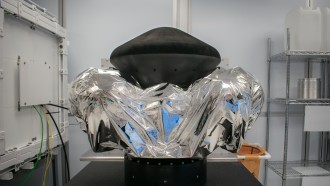The challenge of getting around for the visually impaired is not limited to avoiding obstacles and knowing when to turn left and right. There are a lot of nuances in our surroundings that those with sight may take for granted, from where a water fountain is located to whether or not a passerby is talking to you, that are difficult or even impossible to pick up on if you can't see them.
A new partnership between IBM and Carnegie Mellon University aims to help the visually impaired better see what's around them with a new open platform to support the creation of navigation apps announced Thursday.
IBM and Carnegie Mellon researchers have already used the platform to build an app called NavCog, which will soon be available to download for free from the App Store. The app uses signals from Bluetooth beacons located along walkways and sensors from smartphones to navigate the visually impaired through their surroundings with audio instructions or vibrations from their smartphones, whether they are indoors or outdoors. Researchers are also looking into using facial recognition technology to enable the app to help users identify people and their moods, as expressed on their faces.
NavCog is part of IBM and Carnegie Mellon's open Human-scale Localization Platform, or HULOP for short, which is available to download now through the cloud and also includes a map editing tool and localization algorithms that help the visually impaired know where they are, what direction they are facing and any other helpful information about their surroundings in near real-time.
For now, the implementation of this technology seems to rely on those Bluetooth beacons being located in a user's environment, the installation of which could delay helpful apps like NavCog from becoming widely used, although there are instructions on how to set them up that are available on GitHub. However, hopefully, the fact that IBM and Carnegie Mellon have made this technology open source means that so many people will take advantage of it that the necessary accessories will be set up to meet the demand.
Photo: IBM Research | Flickr









